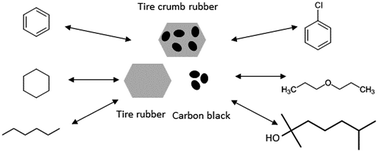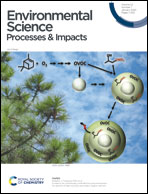The molecular interactions of organic compounds with tire crumb materials differ substantially from those with other microplastics†
Abstract
Tire materials are the most commonly found elastomers in the environment and they account for a significant fraction of microplastic pollution. In the discussions on the environmental impact of microplastics tire materials and their sorption properties have been largely overlooked. In this study we used experimental sorption data from six organic probe sorbates sorbing to two tire materials and their major components, styrene butadiene rubber and carbon black, to gain a better understanding of the underlying sorption processes of tire materials. Commonly applied models used to describe non-linear sorption processes were unable to fully explain sorption to tire materials but showed that absorption into the rubber fraction dominated the sorption process. Hydrophobicity was approximated using the hexadecane–water partitioning constant, which correlated very well with the distribution data obtained for styrene rubber, whereas the correlations between hydrophobicity of sorbates and the sorption data to the tire materials were poor. Although hydrophobicity plays an important role in sorption to tire materials, additional interactions must be taken into account. Overall, the processes involved in sorption to tire materials differed significantly from those governing sorption to other microplastics.



 Please wait while we load your content...
Please wait while we load your content...